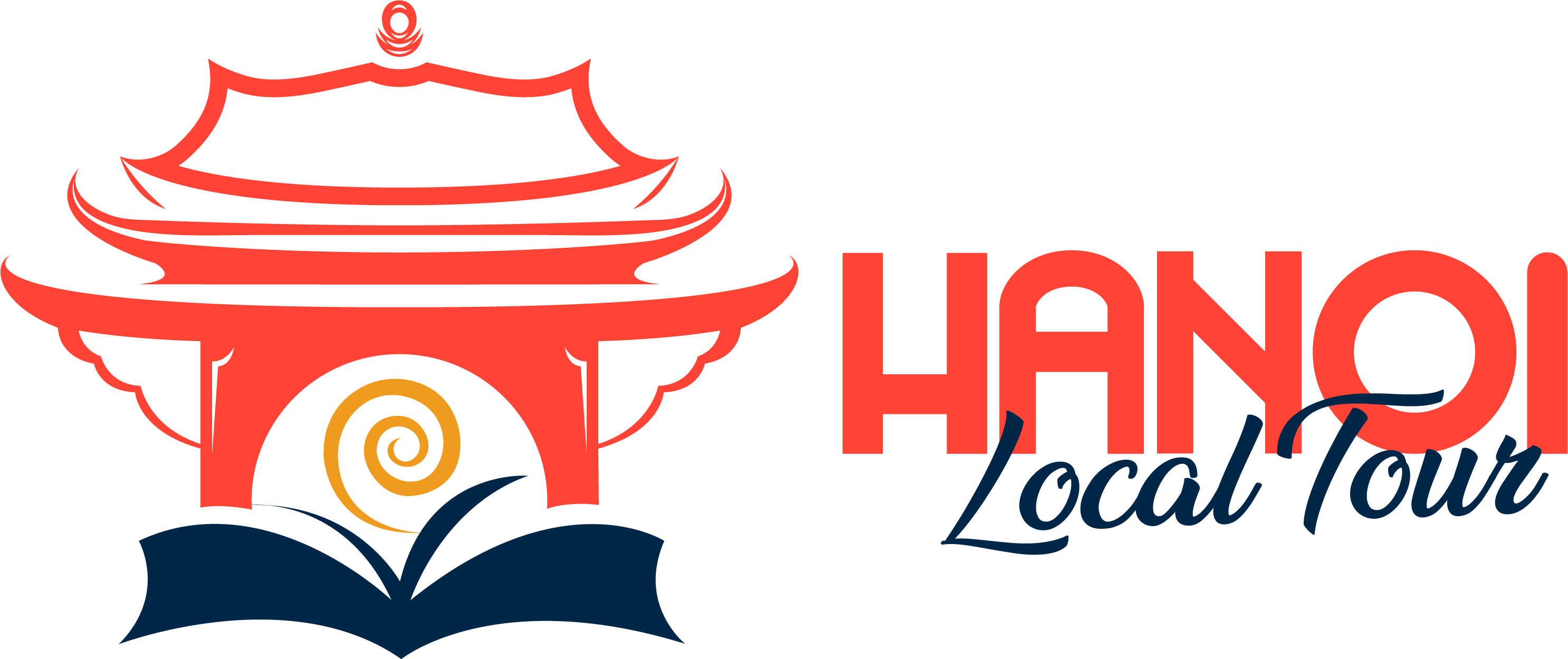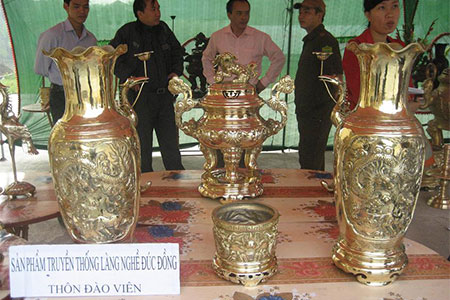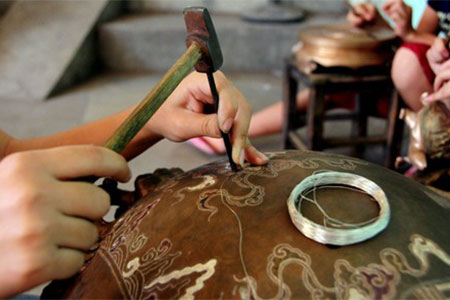Historically, approximately 1428-1527 (Le dynasty), Dao Vien and the other 4 villages including Dong Mai, Dien Tien, Chau My, and Long Thuong (Hung Yen) which are inherently bronze casting villages had been called to Thang Long Imperial to establish a school of casting money and worship things. Here, they settled down and built new village named Ngu Xa to remember their original homeland. Later, the craft village organized into separate ward called Ngu Xa bronze casting ward (now Ngu Xa, Ba Dinh district, Hanoi city). So far, both Dao Vien and Ngu Xa have worshiped the ancestor of the craft who is Nguyen Minh Khong, the courtesy name is Ly Trieu Quoc Su.
Through the epitaph and date carved on the ancient bell, around 1915, Dao Vien had skilled bronze casting artisans who were called to Hue by the king to cast worship things and the royal palace’s doors. Now, the village still preserves the ancient bronze products made by the artisans of the village such as 2 statues of tutelary deities of the village, 2 bells weighing about 200kg and other worship things at temples and pagodas. This is the peak period of Dao Vien bronze casting village with generations of artisans famous for casting monolithic bronze. In the heyday, the village was famous everywhere. At that time, products of the village were plentiful, from everyday household things such as pots, copper trays, worship things to large items with high casting techniques such as statues, bronze bells in temples and pagodas.
Despite long periods of strong growth, bronze casting in Dao Vien also has interrupted periods. Employed households are still sporadic and try to maintain. The traditional craft of ancestors disappears, many descendants of this agricultural land must go to other places and live by other jobs. It seems that the bronze casting in Dao Vien only lives in the elderly subconsciousness, but with dedication and determination of many people, traditional craft of ancestors has been restored and developed in a positive direction
Making a copper product is the quintessence of enthusiasm and talent of the artisans. A skilled bronze casting craftsman has to master 5 sophisticated techniques including imaging technique; the technique of making molds for casting into the copper; the technique of preparation, cooking and pouring copper; engraving technique on the surface of the product; finally, polishing technique. Not only requires techniques, bronze casting also requires meticulousness, delicacy, patience and passion for the craft in order to create a beautiful product.
By the passion of the artisan and the preservation of traditional values, the beautiful bronze casting products are made. If you have the opportunity to visit Hanoi, take a day trip nearby Hanoi to explore Dao Vien traditional bronze casting village to look at the beautiful copper products and feel the love to the craft of the artisan here. Moreover, it is also a chance for visitors to gain more understanding about the beauty of Vietnam in terms of landscapes as well as traditional culture.


